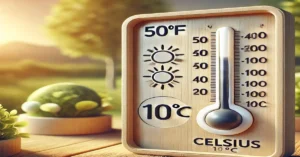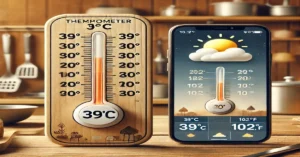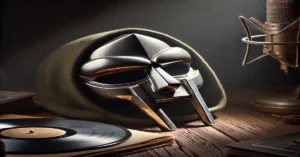Layered haircuts have stood the test of time—and for good reason. Whether you’re going for bouncy volume, easy movement, or a fresh new look, layers can do it all. From sleek and subtle to bold and edgy, layered haircuts offer endless ways to express your personal style while enhancing your natural texture.
This guide will walk you through everything you need to know—from how to choose the best layers for your hair type and face shape to expert styling tips for everyday flair.
What Are Layered Haircuts?
Layered haircuts involve cutting hair at varying lengths to create a series of “layers” that fall over each other. This technique helps reduce bulk, enhance natural texture, and add movement to otherwise lifeless hair.
Unlike blunt cuts that fall evenly, layered cuts allow sections of hair to frame the face, create shape, and balance proportions. Layers can be long and subtle or short and choppy, depending on your desired look.
Benefits of Layered Haircuts
Wondering what makes layered haircuts such a universally loved style? Here’s why they work so well:
- Adds volume to fine or flat hair
- Removes weight from thick, heavy strands
- Creates movement and bounce
- Shapes the face and enhances features
- Versatile styling—from ponytails to curls
- Works for all hair types and textures
Whether you’re trying to grow your hair out or bring life to a shorter cut, layers offer a practical and stylish solution.
Best Layered Haircuts by Hair Length
Short Layered Haircuts
Short layers are ideal for pixie cuts or bob hairstyles. They help create shape and dimension, especially around the crown or jawline.
Popular styles:
- Textured pixie
- Stacked bob
- Shaggy crop
Medium Layered Haircuts
Medium-length layered cuts are easy to maintain and style. They’re great for people who want volume without losing too much length.
Popular styles:
- Shoulder-length shag
- Layered lob (long bob)
- Feathered mid-length cut
Long Layered Haircuts
Long hair can sometimes fall flat without structure. Layers give it life by breaking up the heaviness and adding texture.
Popular styles:
- V-cut layers
- Long layers with curtain bangs
- U-shaped layered cuts
Choosing Layers Based on Face Shape
Choosing the right type of layers can complement and enhance your face shape dramatically.
| Face Shape | Best Layer Type |
|---|---|
| Round | Long face-framing layers to elongate |
| Oval | Almost all layer styles work well |
| Square | Soft layers that begin below the jawline |
| Heart | Chin-length layers to balance wider forehead |
| Diamond | Shoulder-grazing layers with side parts |
| Long/Oblong | Full layers starting from cheekbones or chin |
A skilled hairstylist will assess your facial features and personalize the layers to suit your aesthetic and facial proportions.
Layered Haircuts for Different Hair Types
Straight Hair
Straight hair benefits from layers because they add movement without curl. Soft layers give it dimension while avoiding a flat look.
Best style: Long layers or blunt cuts with soft layering at the bottom
Wavy Hair
Layers can enhance your natural wave and prevent your hair from looking too triangular or heavy at the ends.
Best style: Shaggy or choppy layers, beachy texture with volume
Curly Hair
With curly hair, layering must be done carefully to maintain shape and bounce. Too many layers can lead to frizz, while the right amount adds definition.
Best style: Deva cut or curly shag, cut when dry for precision
Thick vs. Fine Hair
- Thick hair: Benefit from debulking layers that remove weight
- Fine hair: Needs soft, minimal layering to avoid looking sparse
Top Trending Layered Haircut Styles
Staying on trend? Here are the most stylish layered cuts making waves:
1. The Butterfly Haircut
A dramatic, voluminous layered cut with face-framing bangs and layers that “float” like wings.
2. 70s Shag
A retro revival featuring tons of texture, curtain bangs, and a rocker-chic vibe.
3. Wolf Cut
This Gen Z favorite is a mix between the shag and mullet—messy, edgy, and full of personality.
4. Layered Bob with Bangs
Ideal for short to medium-length hair, this combo gives structure while still keeping it soft.
5. Face-Framing Layers
Popular with long hairstyles and perfect for highlighting cheekbones and softening the jawline.
Styling Tips for Maintaining Layered Hair
Want your layers to always look on point? Try these expert-approved tips:
- Use a volumizing mousse or texturizing spray at the roots
- Blow-dry with a round brush for bouncy volume
- Use curling irons or straighteners to define layers
- Regular trims every 6–8 weeks to maintain shape
- Deep condition once a week to keep ends healthy
- Dry shampoo helps keep layers fresh between washes
Common Mistakes to Avoid with Layered Haircuts
Even a trendy haircut can fall flat if not maintained properly. Watch out for these common pitfalls:
- Too many short layers in thick or curly hair
- Improper blending leading to choppy or uneven sections
- Not styling regularly, which can make layers look messy
- Using the wrong products for your hair type
- Skipping trims, causing split ends to travel up the layers
Working with a professional stylist is the best way to avoid these issues and get the most out of your cut.
Conclusion: Is a Layered Haircut Right for You?
If you’re ready to refresh your hairstyle with something dynamic, easy to maintain, and endlessly customizable, then layered haircuts are a top-tier option. From enhancing your natural texture to giving fine hair the illusion of volume, layers are a timeless choice for anyone looking to elevate their style.
Don’t be afraid to experiment—layers are as unique as you are.
Frequently Asked Questions
1. Are layered haircuts good for thin hair?
Yes! Light layers can add volume and movement to thin hair without making it look sparse.
2. How often should I get my layers trimmed?
For best results, trim every 6–8 weeks to maintain shape and prevent split ends.
3. Can layered haircuts work with bangs?
Absolutely. Curtain bangs, wispy bangs, and blunt fringe all pair beautifully with layered styles.
4. What’s the difference between step cut and layered cut?
A step cut has more defined levels, while a layered cut has a more blended and gradual effect.
5. Will layers make my hair look thinner?
When done incorrectly, yes. But the right type of layering can add volume and texture without thinning the look.
Call to Action
Loved these layered haircut ideas?
Share this article, save it for your next salon visit, or subscribe to our newsletter for more expert hair advice, trends, and tutorials!









